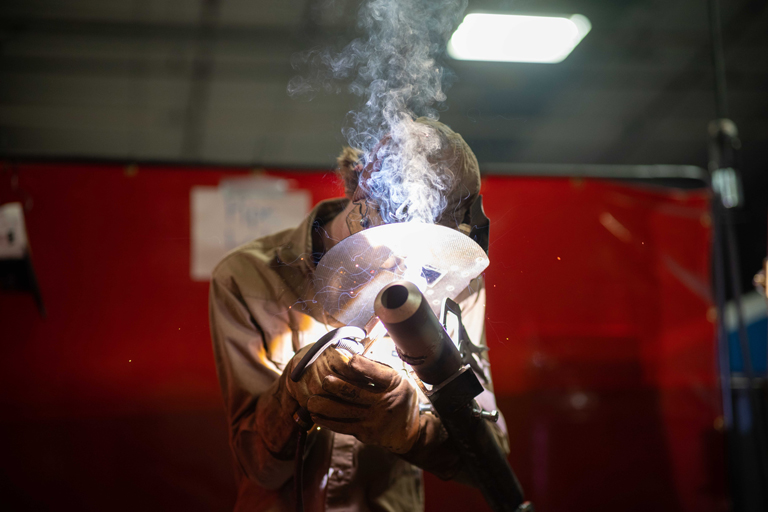Go to work in many industries as a specialist in one of the most highly paid skilled trades.
What is Welding Technology?
Welding occupations are primarily concerned with joining, surfacing, or repairing structures or parts made of metal or other weldable materials. Course work and practical experience provide students with skills and knowledge to determine and perform appropriate welding techniques.
Getting Started
What are my degree, diploma, and certificate options?
- AWS National Skills Standards Level I Certificate
- Arc Cutter Certificate
- Gas Welder Certificate
- Gas Metal Arc Welding Certificate
- Gas Tungsten Arc Welding Certificate
- Pipeline Gas Metal Arc Welder Certificate
- Pipeline Gas Tungsten Arc Welder Certificate
- Pipeline Shielded Metal Arc Welder Certificate
- Production Line Welder Certificate
- Shielded Metal Arc Welding Certificate
- Welder Helper Certificate
How Do I Pay For This?
Worry no more. With the lowest tuition in Kentucky, financial aid options, and a helping hand to guide you through the application process, MCTC has you covered. MCTC will help you reach your goals at a price that won't break the bank.
What Else Do I Need to Know?
Technical Competencies
- Identify, inspect, and maintain Gas Tungsten Arc Welding (GTAW) machines; identify, select, and store GTAW electrodes and filler rods.
- Explain the principles of GTAW and the effects of variables on the GTAW process.
- Explain the theory and application of Plasma Arc Cutting.
- Demonstrate the necessary manipulative skills needed to apply the Gas Tungsten Arc on various joint designs, on plate with both ferrous and non-ferrous metals.
- Identify, inspect, and maintain Gas Metal Arc Welding (GMAW) machines; identify, select, and store GMAW electrodes.
- Explain principles of GMAW and the effects of variables on the GMAW process.
- Explain the theory and applications of GMAW and related processes such as Flux Core Arc Welding (FCAW) and Submerged Arc Welding (SAW) and metallurgy.
- Demonstrate the manipulative skills of Gas Metal Arc Welding on ferrous and non-ferrous metal and on joint designs on plate in all positions, including the welding of groove welds.
- Explain and read occupationally specific prints for welders and fabricate from a blueprint.
- Explain the certification process in welding.
- Test to certification standards on all types of welding.
- Demonstrate a working knowledge of materials used in welding.
- Demonstrate a working knowledge of oxy-fuel identification, set-up, inspection, and maintenance; including identification, selection and care, principles of operation, and effects of variables for manual and mechanized oxy-fuel cutting, welding, and brazing.
- Identify, inspect, and maintain Shielded Metal Arc Welding (SMAW) electrodes.
- Explain the principles of SMAW and the effects of variable on the SMAW process to weld plate and pipe.
- Demonstrate the manipulative skills to perform fillet welds in all positions.
- Demonstrate the manipulative skills to perform groove welds in all positions.
- Practice safety procedures for all types of welding.
Length of Program
You can earn an associate in applied science degree in two years if you maintain full-time status.
This information should not be considered a substitute for the KCTCS Catalog. You should always choose classes in collaboration with your faculty advisor to ensure that you meet all degree requirements.
